A Decade of Theatre in San Diego
January 1, 2020, marks the start of a new decade. Looking back, I notice that I have been reviewing theatre in San Diego for more than ten years. It seems appropriate to consult what I’ve written and see what has changed about San Diego theatre. So, instead of summarizing 2019, I’m returning to 2010 and working my way forward to the present.
My method was to select one San Diego theatre production each year that stood out. My essay will go year-by-year, name the production, and explain why I thought it stood out. By no means will the production I selected necessarily be the best of that year, just one I considered to have made an impact. And, I limited myself to productions for which I wrote reviews. Each year there were many openings I did not review. I do, however, link the review I wrote for each production I name, so readers can look at what I said at the time. Some of these reviews are not my best work, but that fact may make them interesting to read. Or not.
Here are my selections, year by year:
2010: The Whipping Man
Written by Matthew Lopez, and produced by The Old Globe in the Sheryl and Harvey White Theatre, The Whipping Man told the story of a Confederate soldier who returns home to find former slaves who were raised as Jewish on the plantation about to celebrate Passover. The way that Judaism informed post-war relations was one of several fascinating elements of this play, which included a realistic-enough on-stage amputation of a leg. I selected this play because Mr. Lopez clearly had a unique vision as an artist, one that he only recently brought to fruition in his two-part opus, The Inheritance, which is currently running on Broadway. The Whipping Man was intriguing here in 2010, and Mr. Lopez remains intriguing (to me, at least) in 2019.
2011: In the Next Room or the vibrator play
It was not a matter of introducing a new playwright to San Diego: Both San Diego Repertory Theatre, and Moxie Theatre had produced between them three of Sara Ruhl’s other plays (The Clean House, Eurydice, Dead Man’s Cellphone). But, In the Next Room was a 2010 finalist for the Pulitzer Prize and was Ms. Ruhl’s debut production on Broadway, where it garnered a nomination for the Best Play Tony™ Award. What set it apart was the passion with which Rep Artistic Director Sam Woodhouse assembled and directed the production featuring almost exclusively a San-Diego-identified cast. Prestige productions in San Diego often feature actors auditioned nationally, but The Rep demonstrated that a company can create some terrific theatre using local actors.
2012: In the Red and Brown Water
Playwright Tarrell Alvin McCraney launched his career in earnest with a trilogy called The Brother/Sister Plays. The three plays in the trilogy are of uneven quality, and though all three are important to the overall arc of the story, each play can be seen separately. The Old Globe chose the middle play, The Brothers Size, to present to its audience in January 2013, but UC San Diego’s Department of Theatre and Dance got a jump on the Globe by opening the first play of the trilogy, In the Red and Brown Water, in November 2012. Directed by Gregory Wallace, who had recently become head of the acting program, the production was a tribute to the power of Mr. McCraney’s writing, even more so than was the Globe production two months later. Sometimes, creative elements combine to produce magic, and this production was magical.
2013: San Diego Fringe Festival
Seemingly popped up out of nowhere in June 2013, the San Diego Fringe Festival took the Tenth Avenue Performing Arts Center and other venues by storm, presenting a mix of local and out-of-town talent, as well as a few international entries. Many of the presentations were solo shows, and many also featured physical theatre, including circus-type acts. The first festival also included buskers, who plied their trade at Seaport Village, and an exotic dancer, whose show was presented at a “gentlemen’s club” in the Midway District. The move by producer Kevin Charles Patterson was particularly audacious because La Jolla Playhouse had already announced the first of its WithOutWalls (WoW) festivals, which was held in October of the same year. The Fringe has added “International” to its title and has gone through growing pains, but it is still being produced annually. The first one was special, though.
2014: El Henry
In a way, the pop-up production of a Spanglish adaptation of Shakespeare’s Henry IV, Part I (and some of Part II) emerged from the success of both the Fringe and the Wow Festival. La Jolla Playhouse and San Diego Repertory Theatre combined to mount the production on a dirt lot in the Makers Quarter area of San Diego’s East Village. The technical prowess of the two companies contributed to the ability to put up a theatre for a couple weeks’ run, get audiences to come, and once there experience a very hip version of a young man’s journey toward adulthood in a rapidly changing neighborhood that was attracting residents who matched the story’s demographic. But, it also marked the growth of San Diego Rep-based playwright Herbert Siguenza, who had been expanding the vision of Culture Clash, where he had been a founding member. Some of the themes of El Henry were familiar, but Mr. Siguenza’s play was sophisticated while at the same time pushing the cultural envelope.
2015: Come From Away
Both La Jolla Playhouse and The Old Globe had jumped on the bandwagon to serve as a tryout place for shows aimed at New York in general, Broadway in particular, and San Diego audiences became increasing theatre-savvy as a result. Come From Away was different from the norm, though. It was based on a U. S. national tragedy, but it was a Canadian story of radical welcome. It was also an ensemble musical, with twelve actors creating indelible characters of different nationalities. There was only one solo song. The band was onstage. Audiences loved it from the beginning, though there were certainly naysayers, especially when it opened on Broadway. The creativity of the production earned the Playhouse’s Christopher Ashley a well-deserved Tony™ Award for directing. Come From Away is still running on Broadway and Toronto, and the tour is wildly popular. The Playhouse continues to champion new work and send its shows to New York, but the success of Come From Away has been, and, I think, will be difficult to replicate.
2016: The Normal Heart
Ion Theatre had been producing in San Diego for some time by November 2016. It had appeared in various venues, but it had been able to take over the former 6th and Penn theatre in Hillcrest and turn a very wide and not very deep proscenium space into a more flexible box-like space with audience seating in an L-shape. Later, it was able to acquire an adjoining space that it used as a lounge and occasionally as a cabaret space. Under the leadership of Claudio Raygoza and Glenn Paris, Ion mounted many audacious productions, including stellar versions of both parts of Angels in America at the Lyceum Space and a Sunday in the Park With George in the auditorium of the San Diego Museum of Art. Neither of these could have been done in Hillcrest, though. I imagine that The Normal Heart marked something of a last hurrah for the company. It featured the intense and piercing direction and acting that characterized Ion’s work, and there was an urgency in the production of an already-urgent play that was palpable. But, a capacity of 49 seats doesn’t make money for an ambitious company, even if it sells out a lot.
2017: Father Comes Home from the Wars, Parts 1, 2 & 3
Intrepid Theatre’s story in some ways parallels Ion’s. Starting as a company that produced low-budget Shakespeare, Intrepid initially performed in the 6th and Penn space that Ion later remodeled. Then, the search was on for a space, leading to a downtown storefront where the trolley rumbled by, to a private high school in Encinitas, to an old movie theatre in Carlsbad across the street from New Village Arts, and eventually to the Gaslamp’s Horton Grand Theatre, a space it initially shared with Lamb’s Players Theatre and later with San Diego Musical Theatre. Intrepid never totally abandoned its love of performing Shakespeare, but it branched out to plays its leadership loved (a tactic also followed by Backyard Renaissance Theatre Company, which came along more recently). Suzan-Lori Parks’ play, set during and following the Civil War, was typical of this period in the company’s history. Searing but at the same time engaging, it explored how African Americans experienced the war and its aftermath. It also featured stellar performances from the entire company, including two San Diego acting institutions, Antonio T.J. Johnson and Tom Stephenson. Intrepid focused on its outreach to schools after this production closed, and its leadership took up a residency in Canada for a time. There’s been hints that Christy and Sean Yael-Cox are back in San Diego but no word yet of new theatre from Intrepid. We can only hope that the hiatus here isn’t permanent.
2018: The Wanderers
New playwrights need to be nurtured, and even then, the potential may not be realized until years later (as was the case with Matthew Lopez). In Anna Ziegler’s case, The Old Globe gave her play, The Last Match a public reading, followed up with a world premiere production, and two years later gave her next play, The Wanders, a world premiere production as well. I thought The Wanderers was the superior play by far. Both it and The Last Match focused on how celebrity and personal expectations affect intimate relationships. In The Wanderers case, there was a fine synergy between Ms. Ziegler’s ability to write about Judaism in both Orthodox and secular forms and the Globe’s Barry Edelstein‘s to stage these contrasts in a sensitive and affecting way. While La Jolla Playhouse is better known for doing this kind of work, this artist-producer-director collaboration meshed particularly well.
2019: The Virgin Trial
Cygnet Theatre’s story also involves a search for theatre space. Sean Murray and Bill Schmidt founded the company after Mr. Murray left the artistic director position at North Coast Repertory Theatre. They set up a theatre space in a strip mall near San Diego State, and they moved to The Old Town Theatre when the management contract for it came available from the State Historic Park, where the building sits. (Moxie Theatre took over management of the former space). Cygnet has boldly marched forward with producing seasons that are valued by subscribers and San Diego arts patrons. While the company has experienced many successes, this season’s The Virgin Trial resulted from nurturing a relationship with a playwright, as well as from the quality of its past work. The Virgin Trial is the second play of a trilogy by Kate Hennig, focusing on women as royalty in Tudor England. Cygnet staged The Last Wife, and Ms. Hennig gave the company the U. S. premiere of The Virgin Trial. Associate Artistic Director Rob Lufty directed both plays tautly and with passion, and his actors and designers responded in kind. Local companies do not get the opportunity to stage U. S. premieres often, and I hope that Cygnet will be able to stage the third play, Father’s Daughter, when it becomes available.
***
I learned three things from this exercise. First, relationships matter. Some of the work that stood out for me was the product of relationships that were carefully developed, much of the time with playwrights, either promising or established, or with directors, designers or performers. Second, real estate matters. Theatres with secure spaces (often with a governmental connection, such as with a city or the State) provides enough security that a company can not only thrive but take chances. Adequate performance spaces are at a premium in San Diego, and affordability is a significant issue. Third, vision matters, as Diversionary Theatre found to its delight when it lured Matt M. Morrow to San Diego. Each of these selections was the product of exceptional artistic vision. And, to be honest, none of these things has changed in the past decade and are unlikely to change in the decade ahead.
Looking forward to the journey. Hope you are as well.

In addition to reviewing theatre for San Diego Story, Bill also reviews for TalkinBroadway.com. He is a member of the San Diego Theatre Critics Circle and the American Theatre Critics Association. Bill is an emeritus professor in the School of Journalism and Media Studies at San Diego State University.

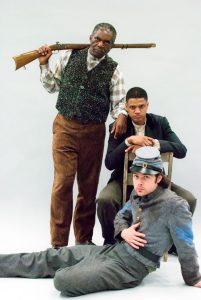
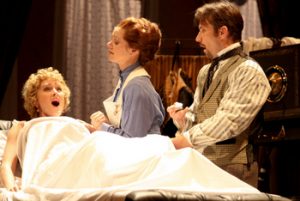
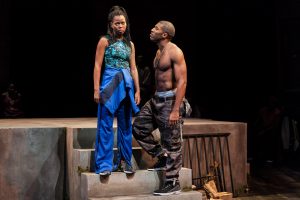
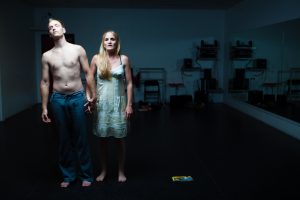

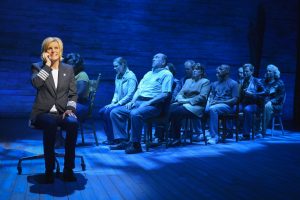
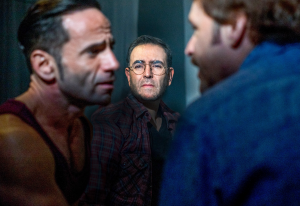
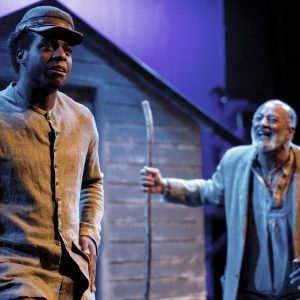
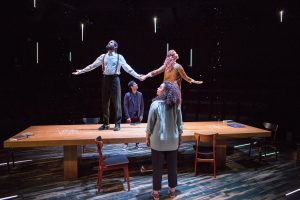
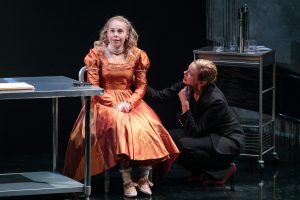
I am delighted that you have included in your decade-long survey a play staged by Ion Theatre. I miss Ion’s shrewd choice of plays and the edgy brilliance with which they were staged. Paris and Raygoza infused adventurous daring even into plays that may not have–at first glance–belonged to that category. I do not find any current San Diego company that sets my anticipation at the level that Ion Theatre regularly did, although sometimes Cygnet Theatre and Morrow’s work at Diversionary come close.